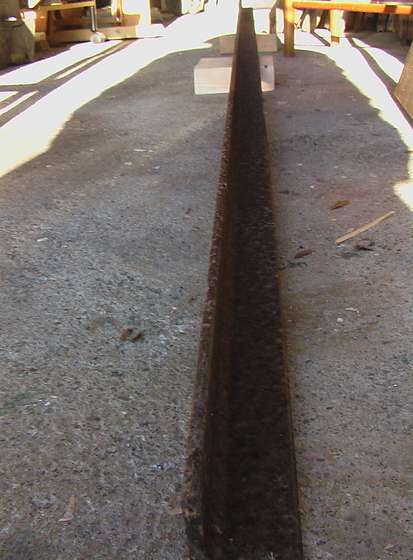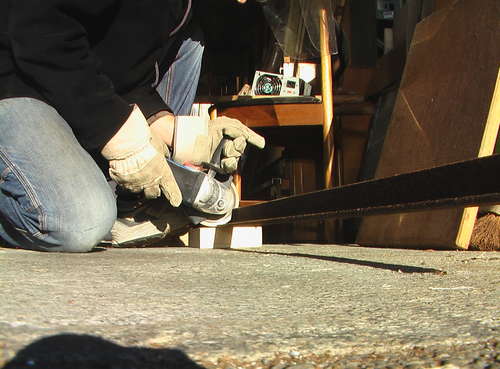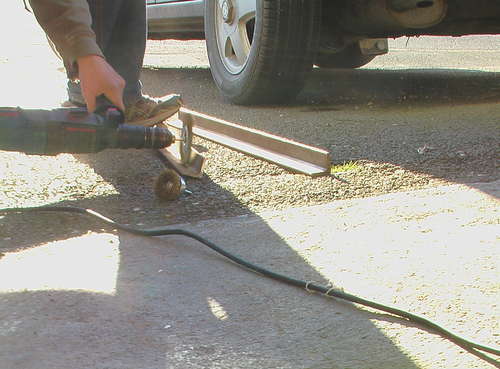5– The Lathe Bed
I had some scrap angled aluminium which I took from some old ‘science draws’ (it formed the handles) that my university was throwing away. This on its own looked to be a bit flimsy, so I also rescued a long peace of angle iron that was rusting away at my parents farmhouse.
As you can see the steel is well rusty and actually quite pitted but is hopefully still thick enough to add the rigidity we’re after. Once the steels cleaned up the aluminium can bolt on top to create a smoother surface for the sliding tail stock.
First I used a small cheap angle grinder to cut the steel into two lengths (a hacksaw would be OK but very slow). Then I began to clean it up.. I found that belt sanding (real course 40 grit) followed by drill mounted wire brush seemed to work.
Bits of scrap like this are easy to find. Possible sources: metal bed frames, surplus construction site materials, old gates, old trailer or other large machinery framework. Basically you are looking for something long, straight, and strong enough to support a spinning log without undue flexing. My general advice would be to think about the size of lathe you are wanting to make and the kinds of things you want to make with it, and then overbuild the lathe bed. It can’t be too strong, but consider the weight and size ;) Mine ended up being much heavier than expected and I need help to move it about.
One long rusty peace of scrap metal





September 30th, 2012 at 5:21 am
Good idea to wear a respirator to keep the rust and dust this kicks up out of your lungs.
January 5th, 2013 at 6:26 am
Hmm is anyone else experiencing problems with the images on this
blog loading? I’m trying to figure out if its a problem on my end or if it’s the blog.
Any suggestions would be greatly appreciated.